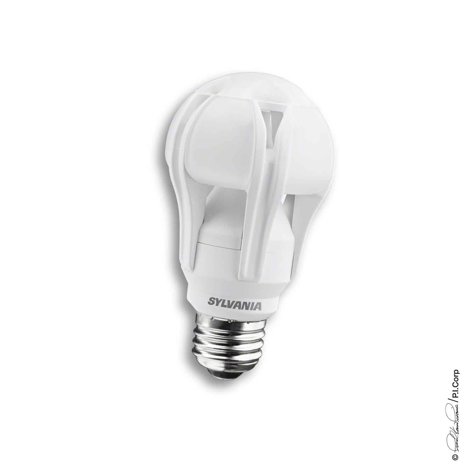NEW YORK (AP) — Sorry to see 100-watt bulbs disappear from stores because they were energy hogs? You can now get LED bulbs that roughly match the 100-watters for size and brightness, but use far less energy.

Until recently, your only alternative was a compact fluorescent bulb, which has several drawbacks compared with light-emitting diodes. Most people see the light quality as less pleasing, and the bulbs contain a small amount of mercury that's released if the glass breaks. LEDs, by contrast, don't contain any volatile, hazardous substances and are durable. They also last longer.
Osram Sylvania, a division of Germany's Siemens AG, said Monday that it's shipping the first batches of its Ultra LED bulb to some Lowe's stores. The bulb uses 20 watts of electricity and costs $50. It's slightly larger than a regular 100-watt bulb, so it may not fit in all fixtures. Osram claims 25,000 hours of use, or more than 20 times the lifespan of a standard, incandescent bulb.
Competitors aren't far behind. Royal Philips Electronics NV plans to start selling its own, slightly brighter 100-watt-equivalent LED bulb at Home Depot's website starting in a few weeks for about $55. Startup Switch Lighting Bulb Co., with its unusual liquid-filled bulbs, plans to start selling 100-watt equivalents late this year or in January.
The federal government banned the manufacture of regular 100-watt bulbs on Jan. 1 as a consequence of new energy-efficiency standards. Much the way it forces car manufacturers to improve fuel efficiency, the government is forcing the lighting industry to move away from incandescent bulbs because they convert relatively little of the electrical input into light. Most of the energy is dissipated as heat. In the next step, 75-watt bulbs will be banned at the start of next year, and 60-watt and 40-watt bulbs at the start of 2014.
Compact fluorescent bulbs that produce light equivalent to 100-watt bulbs have been available for a few years and cost as little as $4 each.
LEDs are small chips that produce light when current passes through them. In their red and green incarnations, they've been around for decades. Technical breakthroughs in the 90s allowed the manufacture of chips that produce white light.
LED bulbs equivalent to 60-watt bulbs have been available for a few years and now cost around $25 each. The problem with making brighter models is that while LEDs produce less heat than regular bulbs, the heat they do create shortens the lifespan and reduces the efficiency of the chips. Cramming a dozen chips together in a tight bulb-shaped package that fits in today's lamps and sockets makes the heat problem worse, and the brighter the bulb, the more heat is produced. LED bulbs have large, finned metal collars to radiate the heat.
